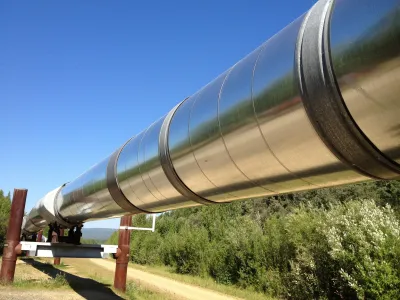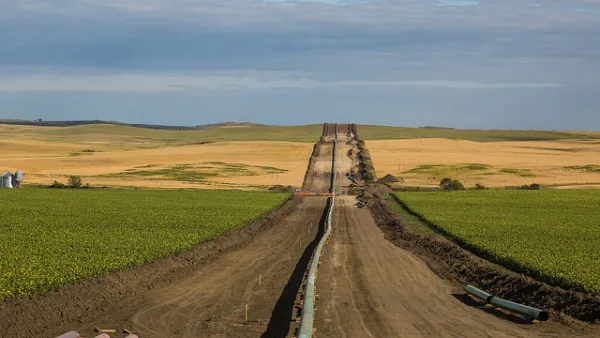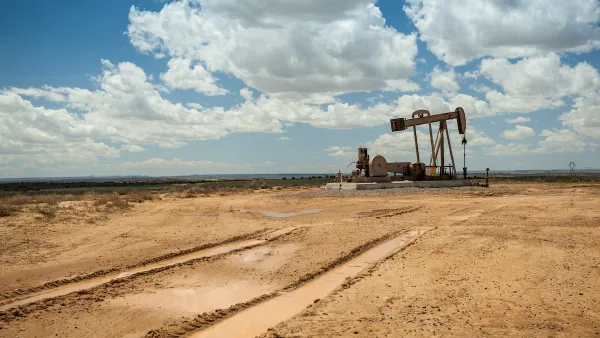Safety is one trigger in the heated debate over whether fossil fuels should be transported by pipeline. While the industry insists the method is safer than others, the spread of accidents since 1986 is substantial.

[Updated Dec. 9, 2016]
In the wake of the protests at Standing Rock, oil and gas pipelines remain as fraught an issue as ever. George Joseph writes, "Oil industry supporters argue that pipelines are safer alternative to hauling fuel by tanker trucks or freight trains. [...] Environmentalists, however, point to a lack of adequate state and federal regulation and the difficulties of maintaining millions of miles of aging pipeline infrastructure."
The statistics bear some of those worries out. "Over the last twenty years, more than 9,000* significant pipeline-related incidents have taken place nationwide, according to data from the Pipeline and Hazardous Materials Safety Administration. The accidents have resulted in 548 deaths, 2,576 injuries, and over $8.5 billion in financial damages."
[*Editor's note: A representative at the Pipeline and Hazardous Materials Administration (PHMA) of the U.S. Department of Transportation contacted Planetizen to point out that the reported 20-year total of significant pipeline incidents is 5,675. Incidents deemed significant have resulted in 347 fatalities, 1,346 injuries, and $7.5 billion in costs. All data for pipeline incidents, significant and otherwise, are available online.]
Using federal data compiled by environmental advocate Richard Stover, CityLab mapped out all major pipeline accidents occurring from 1986 through 2016. "Significant pipeline-related incidents have picked up in recent years in certain states. In Texas, for example, the effects of the state's drilling boom may be seen in its increased accident rate: since 2009 the state has had 497 incidents, over a hundred more than in the seven years before."
FULL STORY: 30 Years of Oil and Gas Pipeline Accidents, Mapped

National Parks Layoffs Will Cause Communities to Lose Billions
Thousands of essential park workers were laid off this week, just before the busy spring break season.

Retro-silient?: America’s First “Eco-burb,” The Woodlands Turns 50
A master-planned community north of Houston offers lessons on green infrastructure and resilient design, but falls short of its founder’s lofty affordability and walkability goals.

Delivering for America Plan Will Downgrade Mail Service in at Least 49.5 Percent of Zip Codes
Republican and Democrat lawmakers criticize the plan for its disproportionate negative impact on rural communities.

Test News Post 1
This is a summary

Test News Headline 46
Test for the image on the front page.

Balancing Bombs and Butterflies: How the National Guard Protects a Rare Species
The National Guard at Fort Indiantown Gap uses GIS technology and land management strategies to balance military training with conservation efforts, ensuring the survival of the rare eastern regal fritillary butterfly.
Urban Design for Planners 1: Software Tools
This six-course series explores essential urban design concepts using open source software and equips planners with the tools they need to participate fully in the urban design process.
Planning for Universal Design
Learn the tools for implementing Universal Design in planning regulations.
EMC Planning Group, Inc.
Planetizen
Planetizen
Mpact (formerly Rail~Volution)
Great Falls Development Authority, Inc.
HUDs Office of Policy Development and Research
NYU Wagner Graduate School of Public Service





























